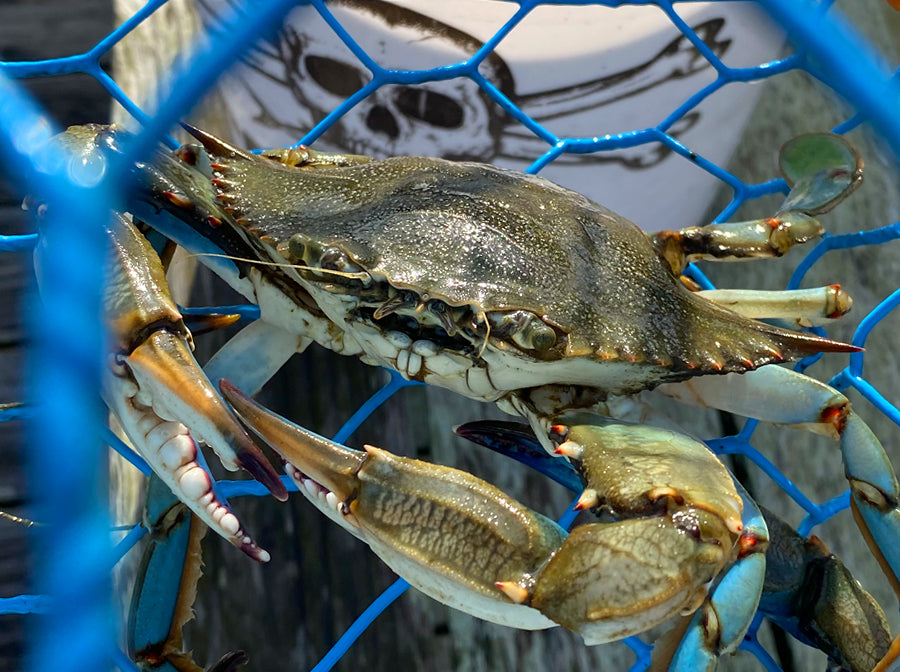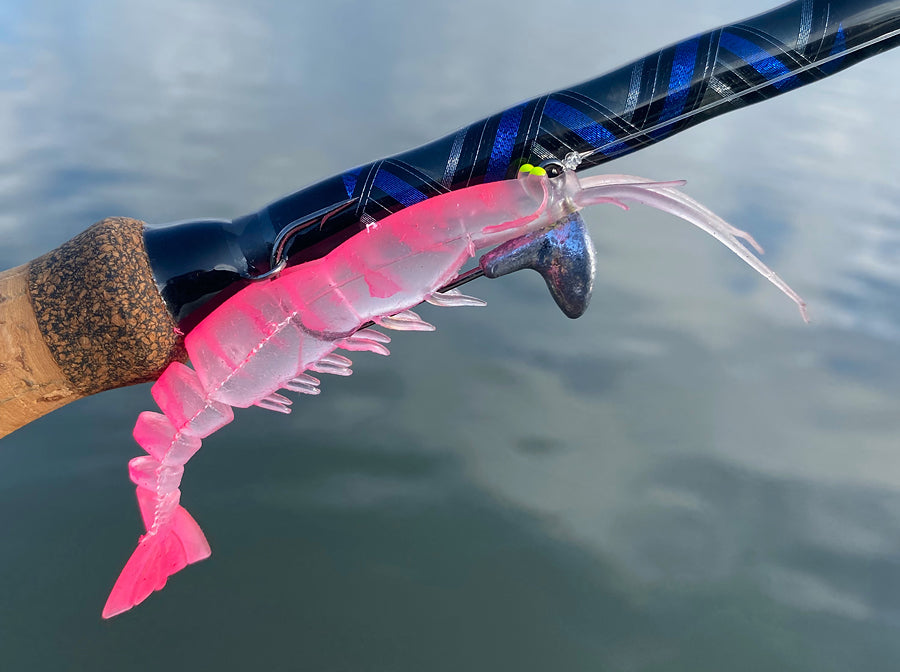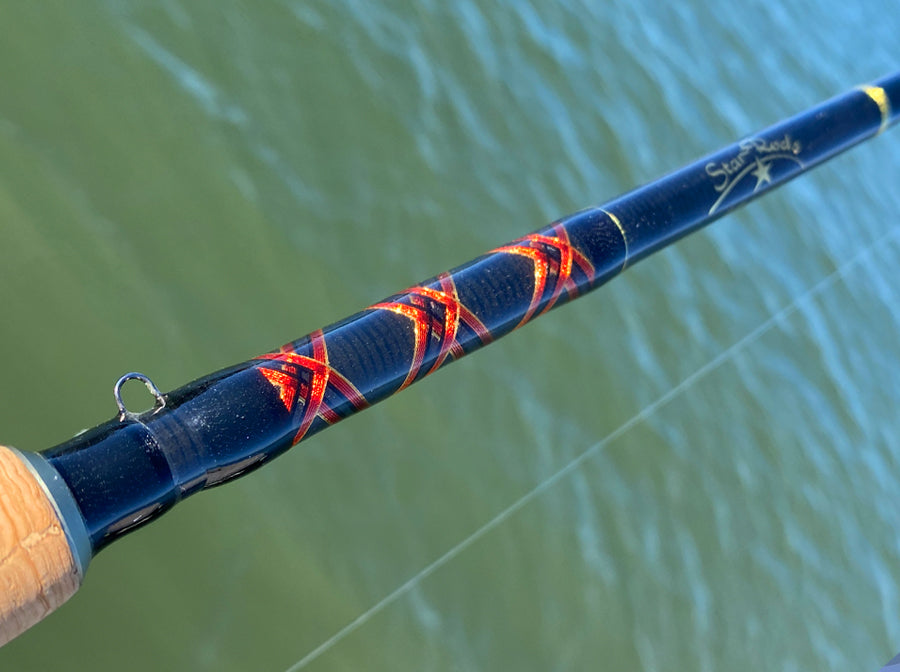The only thing better than feasting on fresh crab is dining on crustaceans that you caught yourself. Crabbing is affordable, easy for anyone to learn and fun for the entire family. Getting started requires only a minimal investment in equipment. Best of all, crabbing can quickly pay dividends with a delicious meal that you won’t soon forget. Our guide to crabbing includes tips and advice that will help you bring home dinner.
Crabbing is easy to learn and fun for everyone.
How to Use a Crab Hand Line
The simplest way to catch crabs doesn’t involve a trap at all. You simply attach some bait to the weighted end of a crab throw line and drop it into the water. Wait until the crab starts clawing at the bait, pull in the line and drop the line and crab into a net or bucket.
Tip: To improve your odds, place the bait inside some pantyhose before tying it onto the throw line. The pantyhose will help keep the bait and crab on the line for longer.
How to Use a Crab Net
Ring crab nets are easy to use and require no prior experience. Simply secure the bait of choice inside the net along with some weights, such as rocks, that will hold the net in place on the bottom. Next, lower the net into the water using a rope and allow the net to settle on the bottom. Once the crabs are inside the net, quickly pull the trap line tight and haul the net to the surface. Then place the crabs into a bucket or cooler.
Best Ring Crab Nets: If you’re serious about crabbing, then you’ll want a high-quality ring net or dip net, such as the Danielson Deluxe Crab Net with Harness. Featuring a braided-on rope harness with float, this premium crab net is sized for easy handling and maximum effectiveness. Vinyl-coated steel construction and tough polypropylene netting ensure lasting durability.
Pro Tip: Bring a fishing rod and wet a hook while you’re waiting to catch some crabs.
How to Use a Crab Trap
Ready to take your crabbing game to the next level? Recreational crab pots are affordable, durable and you only need one or two to get started. To set a crab trap, secure bait inside the trap, using a bait cage. Then lower the trap into the water using a trap line. A crab pot float attached to the trap line will bob on the surface of the water and help you easily find the trap when you return. Highly visible floats, or markers, keep boats from running over the crab trap and line.
Box crab traps and pyramid crab traps improve the odds.
Best Box Crab Traps: The Sea Striker Square Crab Trap makes a great option for first-time and experienced crabbers. The 10.5" crab trap features tough welded wire construction that’s been plated in zinc for resistance to corrosion.
Pacific Box Crab Traps: If you’re crabbing on the West Coast, you’ll want a box trap designed specifically for Pacific crab species. The Danielson 24" Fold-Up Pacific Crab Trap is built for Dungeness and stone crabs that are found in the Pacific Northwest. This durable “best-in-class” design is compliant with crabbing regulations in Alaska, Washington, Oregon and British Columbia. The trap features four entrance doors along with dual escape rings for undersized crabs.
Best Pyramid Crab Traps: Pyramid crab traps add a proven dimension to any spread. The 16" x 16" Sea Striker Star Crab Trap features a rugged steel wire construction in a foldable design that’s easy to transport and store at home. The pyramid trap design meets most state and local crabbing regulations.
Best Baits for Crabbing
The old saying that crabs will eat anything is mostly true. Crabs are opportunistic bottom feeders, snatching up whatever they can easily get their claws on. They’re generally attracted to meat, but some meats work much better than others.
Fish: Many experts agree that the best bait for crabbing is fish caught from the same waters. Crabs seem to prefer bait that appears natural to them and where they live. Any fish species will work, including mullet, spot, croaker, shad, bluefish and sardines.
When cut into smaller chunks, and placed in a bait bag, the oily meat releases a strong scent that attracts crabs. Don’t throw away the fish heads, guts and tails—crabs love them as well. When fresh (or rotten) isn’t an option, try frozen or canned fish such as sardines. Baitfish caught with a cast net will also work.
Razor Clams: Commercial crabbers have used this secret weapon for years. Both live and frozen razor clams work. However, they tend to be expensive. Instead, try digging your own clams in the muddy marshes where you are crabbing.
Chicken: Crabbers have long used chicken parts to catch crabs. Unlike humans, crabs will eat essentially any part of a chicken, including the liver and neck. In fact, crabbers prefer chicken necks because they last longer than other parts. A quick trip to the poultry aisle at the local grocery store or leftovers from last night’s dinner will do the trick. Coastal supermarkets often offer cheap, packaged poultry labeled as “crab bait.” Turkey parts will also work in a pinch.
Crabs will eat almost anything, but they prefer fish, chicken and other meats.
Cat Food: This one may be surprising, but many old-time crabbers swear by canned cat food. It’s cheap and easy to use—simply punch a few holes in a can and place it inside a crab trap or net.
Crabbing Accessories
A few key accessories will help you make the most of your crabbing experience. You’ll need a crab trap line to set and haul in your traps. Crab tongs allow you to safely handle your catch without getting pinched. Avoid running afoul of wildlife regulations by using a crab gauge, which allows you to quickly check the size of crabs.
Crabs make a delicious addition to the dinner table.
Where to Go Crabbing
Fishing piers located on calm waterways are usually great spots for crabbing with a ring net or throw line. If you are not sure where to go, stop by a bait and tackle store. Tackle shops can provide accurate local information for both fishing and crabbing. Fishing tackle retailers know their local waters and they will be happy to share their knowledge and provide trusted advice.
More Resources
Pro’s Guide to Saltwater Jigging







